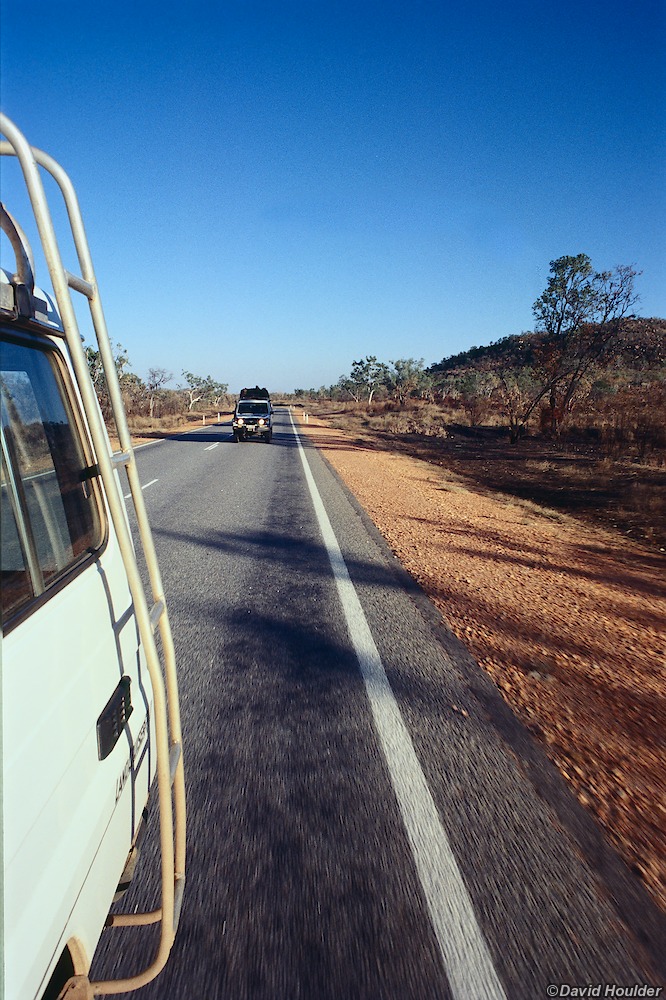Purnululu
Purnululu National Park, also known as "The Bungle Bungles" is situated in the Kimberley region of northern West Australia. The main geological features of the area are the distinctive eroded domes, and Piccaninny Creek, which has cut a deep gorge through the main plateau. The creek itself is usually dry during winter, and this walk follows the creek and its tributaries, with an extra day walk out to the east on the last day. Navigation in the main gorge is pretty easy. Bear in mind that the creek can flood very quickly, so don't go if rain is forecast.
There are five main tributary gorges, arranged a bit like the fingers and thumb of your right hand. Access to the lower end of each tributary from the main gorge is usually pretty easy, but some are a narrow squeeze in their upper parts and may even involve a swim in fairly cool water. Progress along each tributary is usually arrested by a cliff or impassable outcrop at some point
While Piccaninny Creek is the main tourist attraction (you'll probably be accompanied by he occasional sounds of light aircraft as you walk along it), the open country to the east is quite different and also worth a visit.I did this walk over five days in the winter of 2000 with a commercial tour operator. They had their own vehicles, which solved the main transport problem of getting from Kununurra (the closest main town) to the start of the walk and back out again five days later.
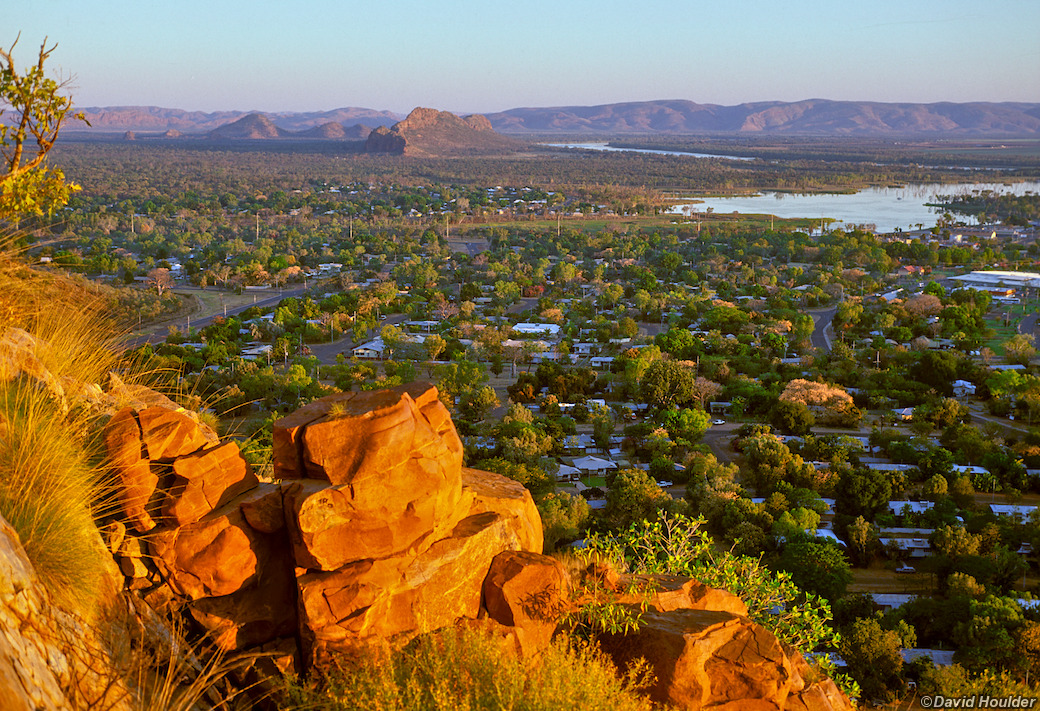
You can fly in to Kununurra and stock up on most groceries there. It's probably wise to check the availability of your particular stove fuel first - even methylated spirits. You can probably hire a four-wheel-drive vehicle there, but a cheaper option might be to organise with one of the local tour operators to drop you off and pick you up again a few days later. Even if you have to pay for two round trips it may be cheaper than hiring a 4WD for a week.

You will definitely need a four-wheel-drive vehicle to get to the start of the walk. It's about 300km from Kununurra, with the last section on unsealed roads with at least one tricky creek crossing thrown in for good measure. It took more than half a day to drive in.
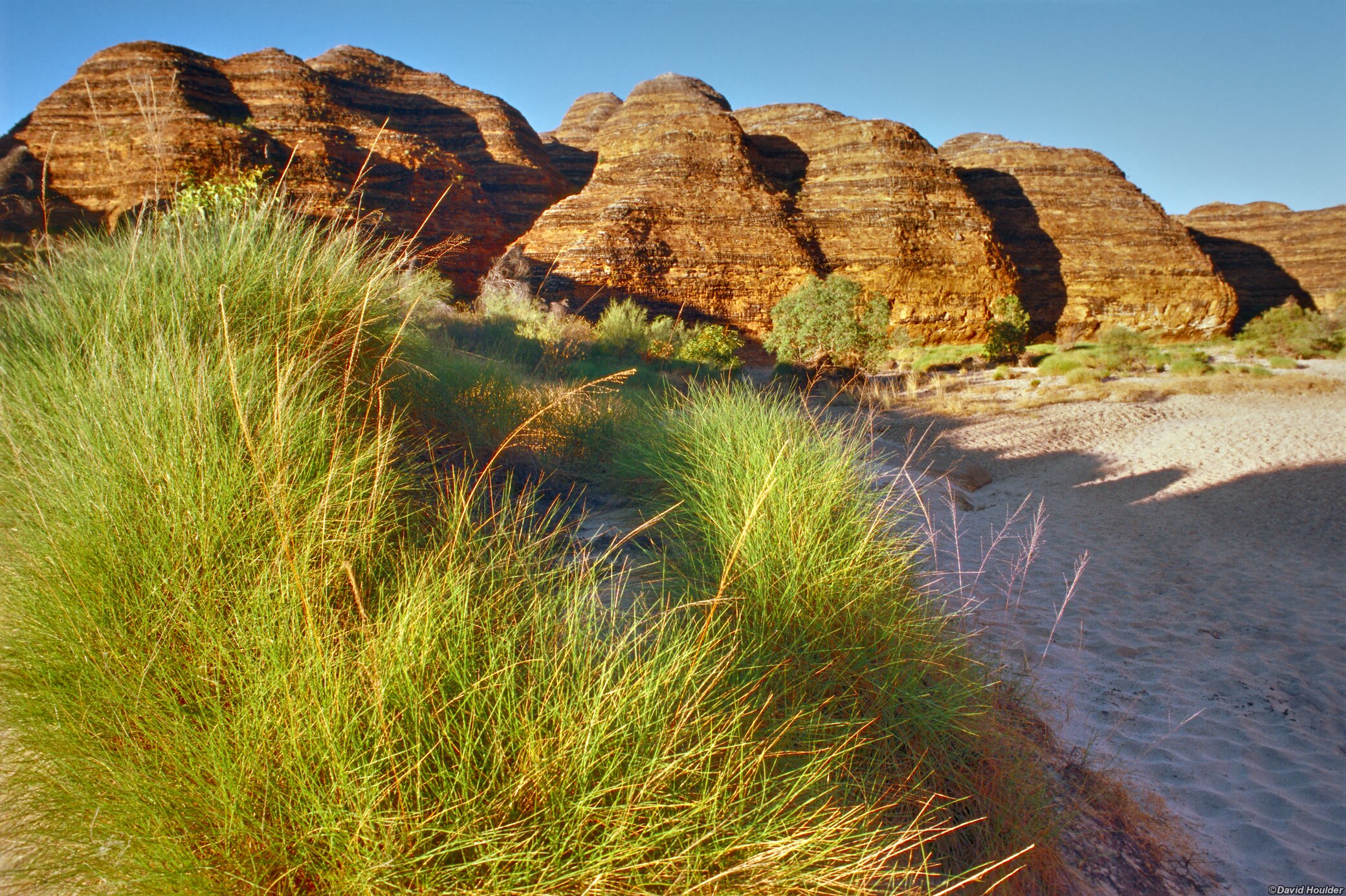
Since it's a long drive to the start from Kununurra, you'll probably start walking in the afternoon and make camp a little way along the lower north-east section of the creek.
The grass in the foreground is Spinifex. It looks soft and inviting, but it's extremely spiky.
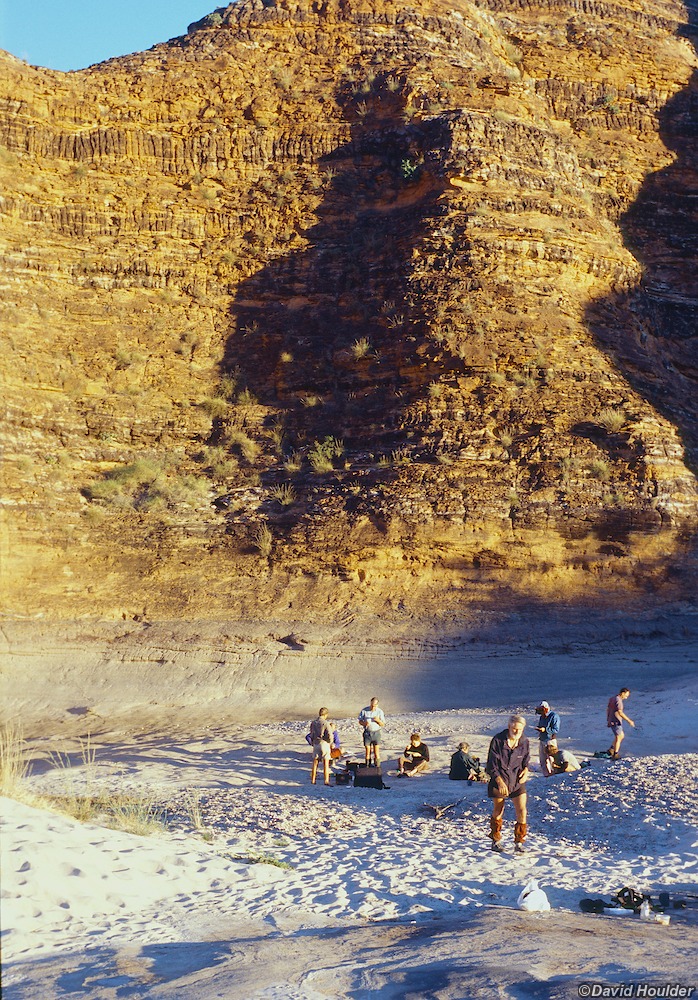

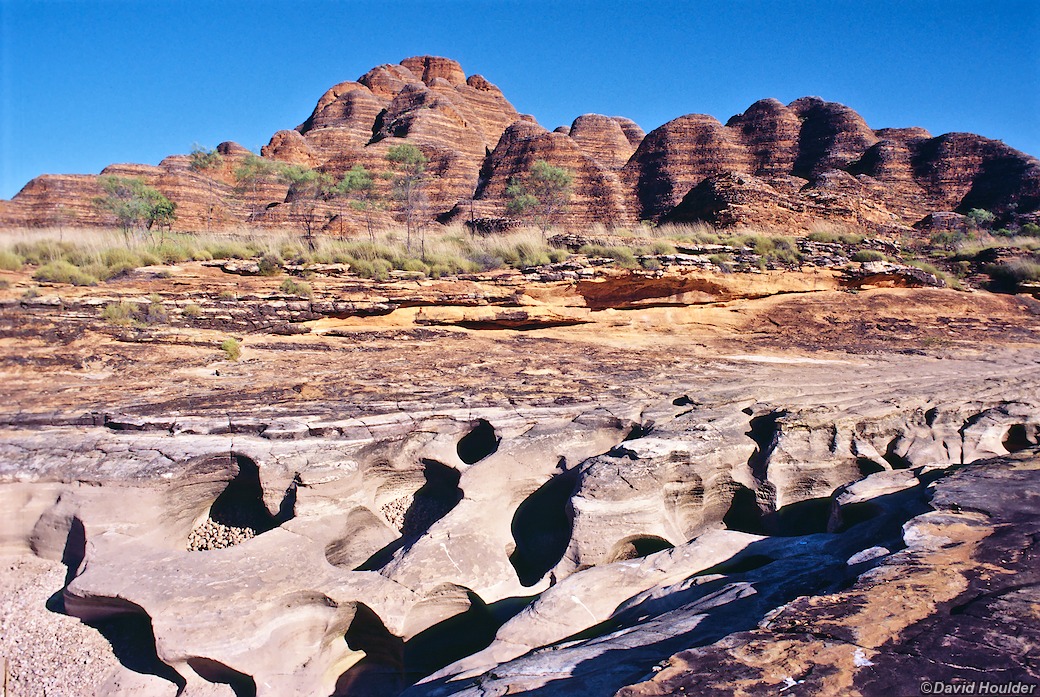
In July the creek retreats into a series of waterholes. In the wet season, it's a torrent and has carved the bed into all sorts of strange shapes.
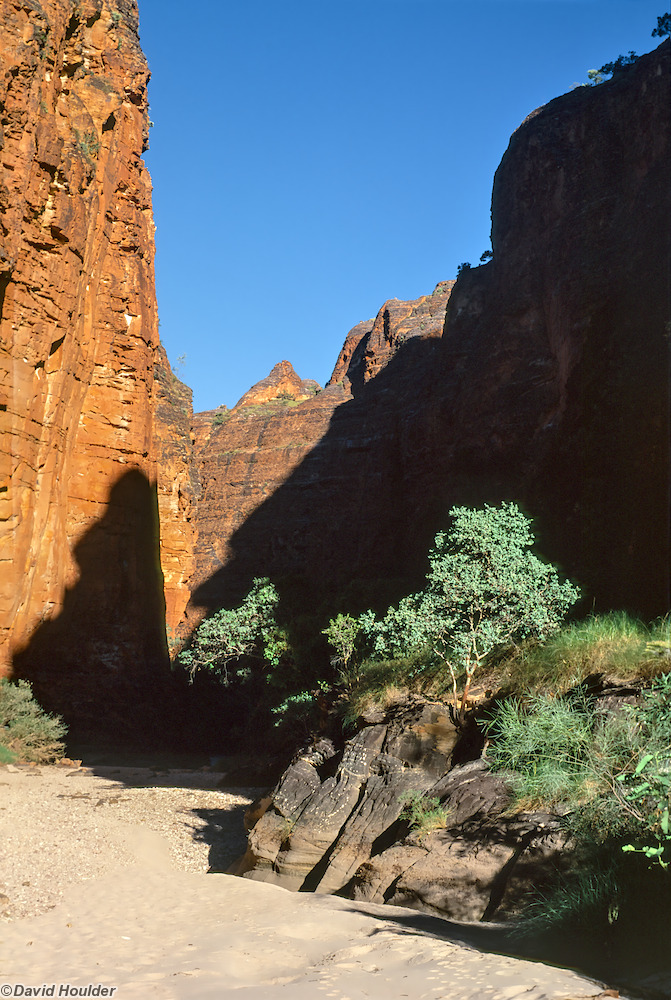
A day or two later and the gorge has narrowed to about 50m or so.
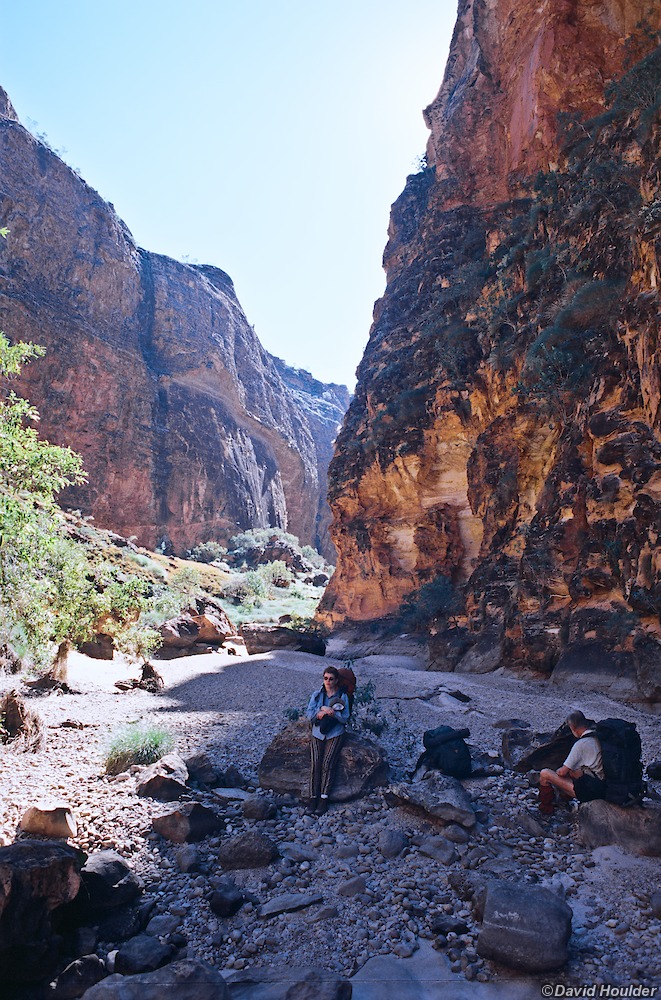
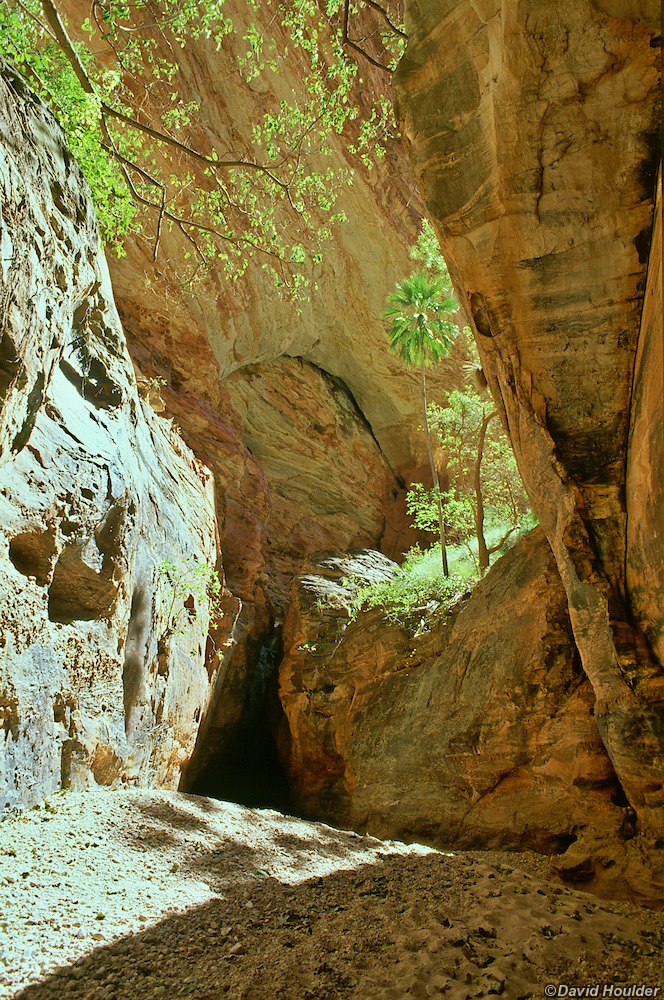
Five tributary gorges feed into Piccaninny Creek, much like the fingers of your right hand. This gorge narrowed into a series of dark, elongated water holes hemmed in by cliffs less than a metre apart. It took about 40 minutes of swimming and walking to track this one to its end in a pitch black cave.
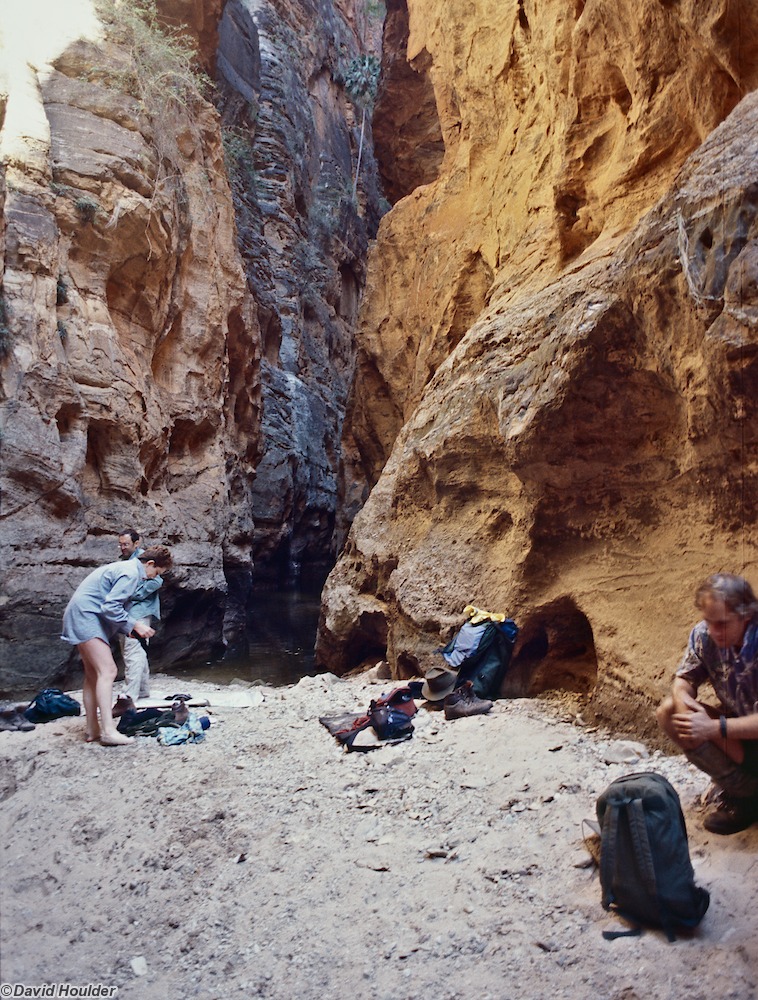

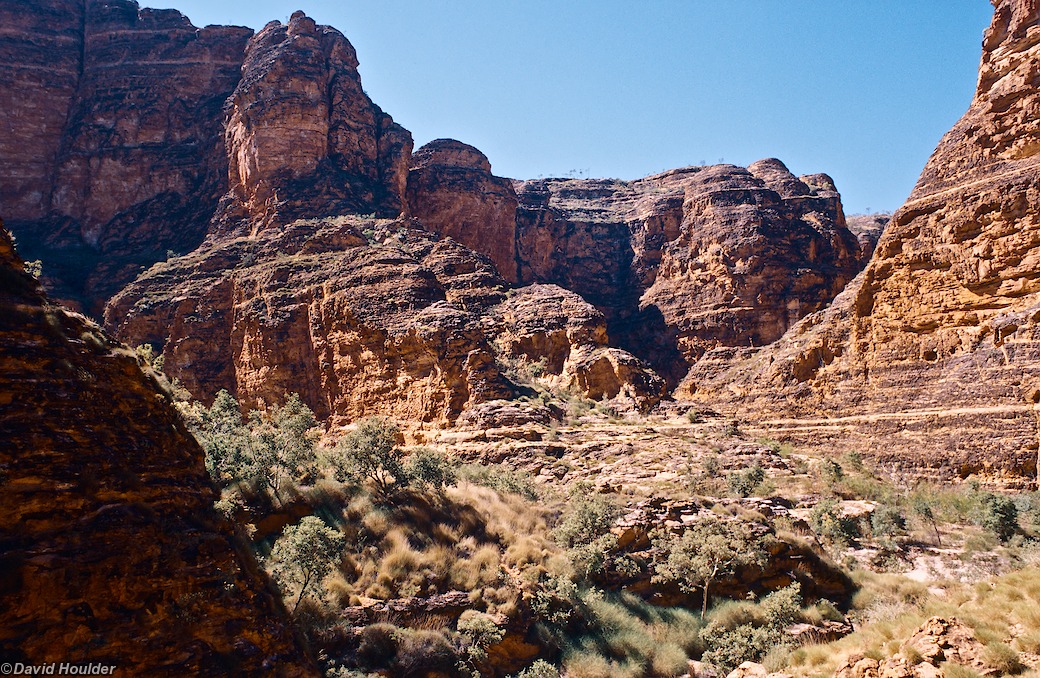
The main gorge opens up quite a bit here where the "thumb" meets Piccaninny Creek.
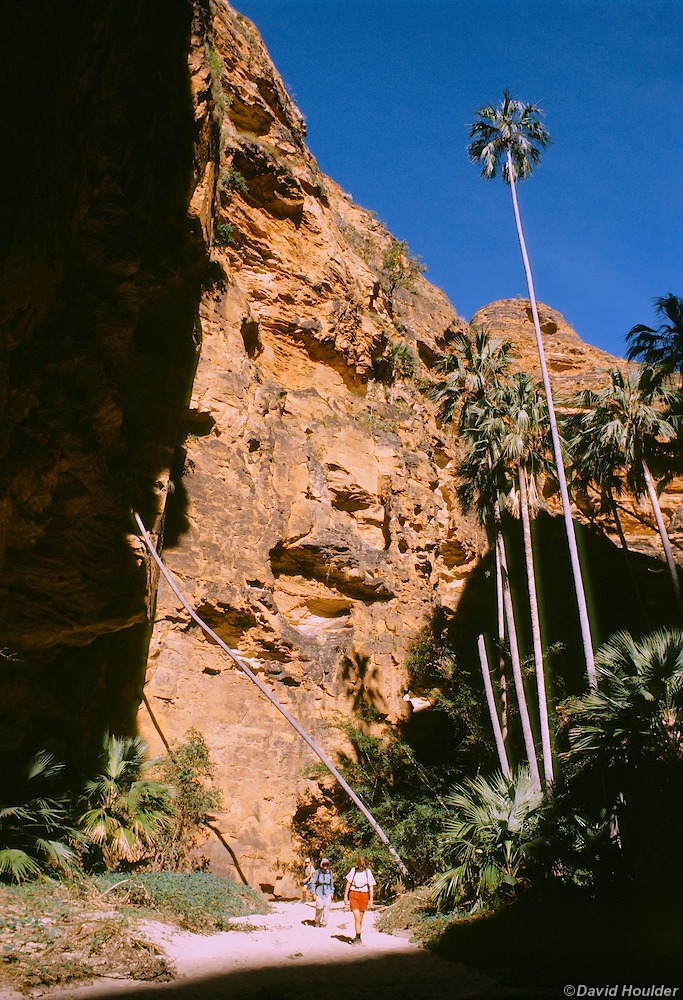
One of the other side gorges. This one is perched about halfway up the cliff, and is reached by boulder hopping out of the main gorge. This gorge ends in a cave with a huge chimney running up to the plateau where the water gushes in during the wet season.
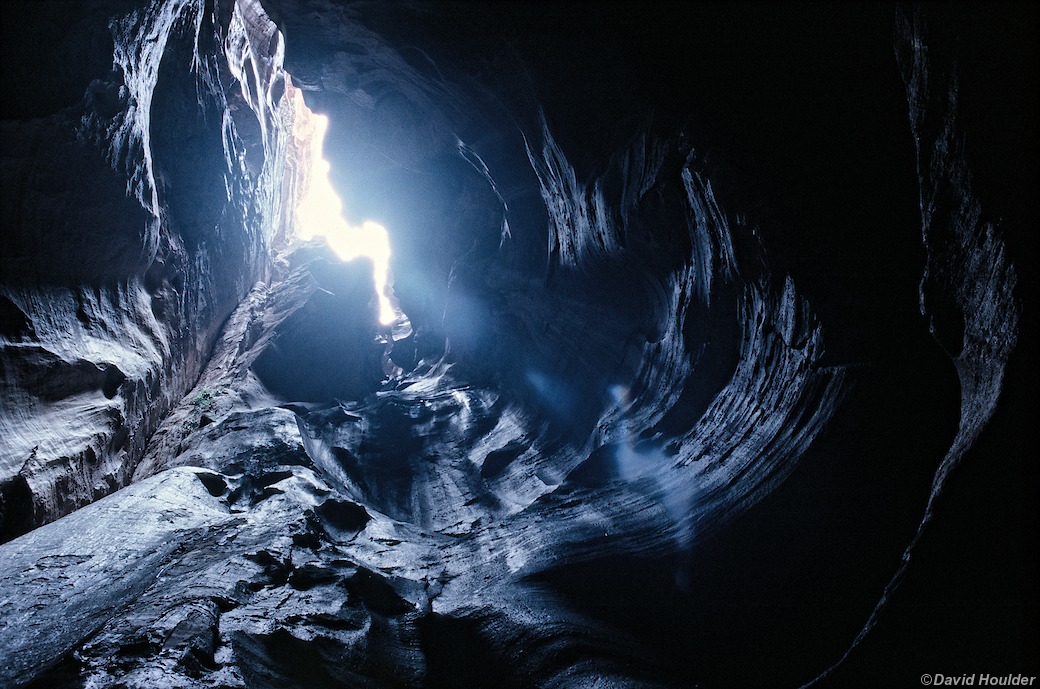
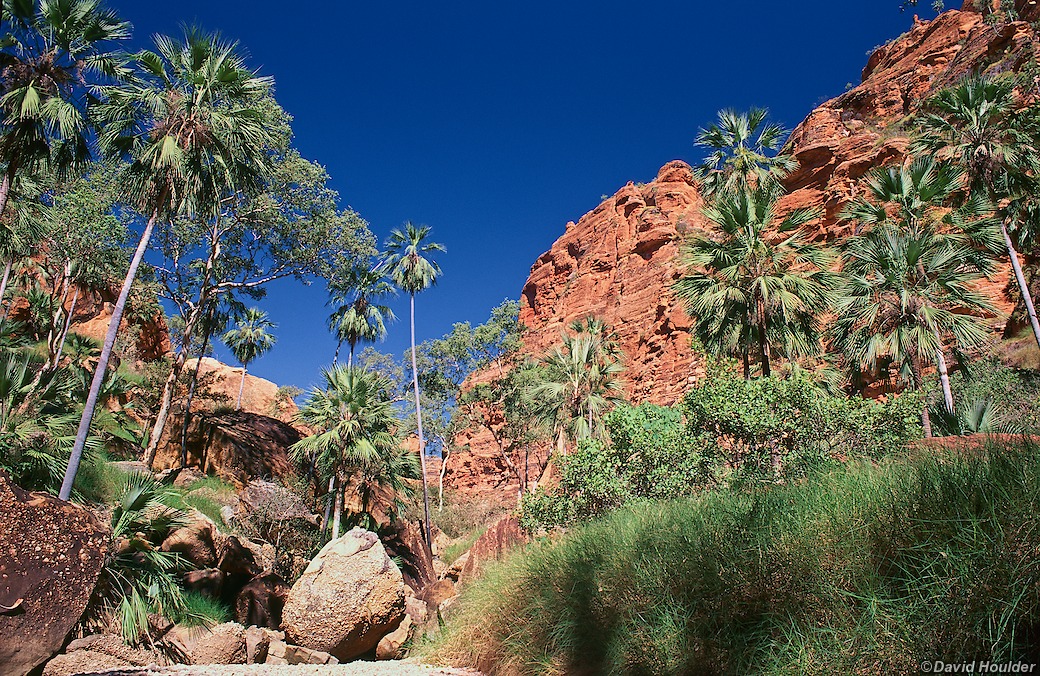
The main gorge creeps up into a very pleasant palm-filled valley.

Another view from under the palms at the top of the main gorge.
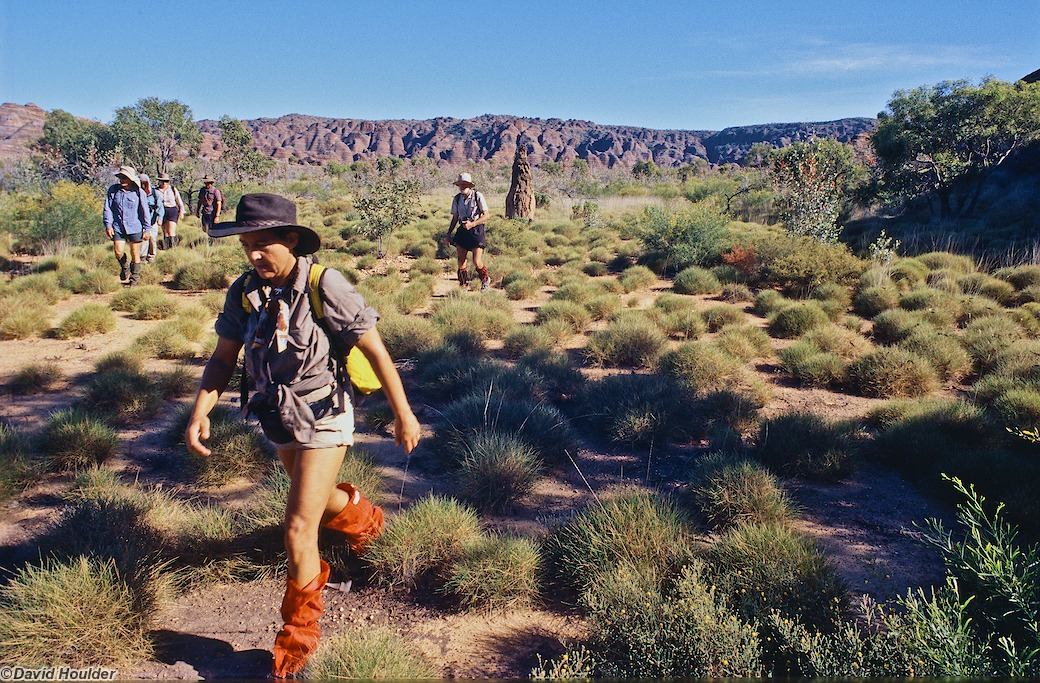
There's a lot to see outside of the gorges too. We spent a day walking around the open country east of the mouth of Piccaninny Creek.
Be aware that this involves walking through Spinifex, which is very spiky. Wear your toughest boots and gaiters if you have them.
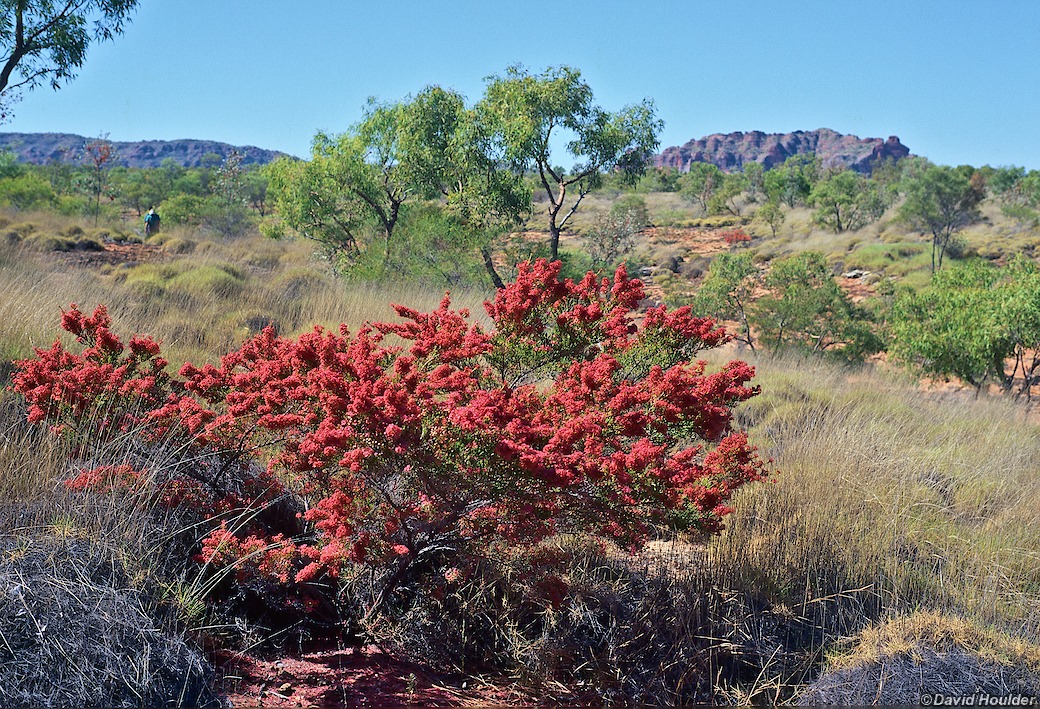
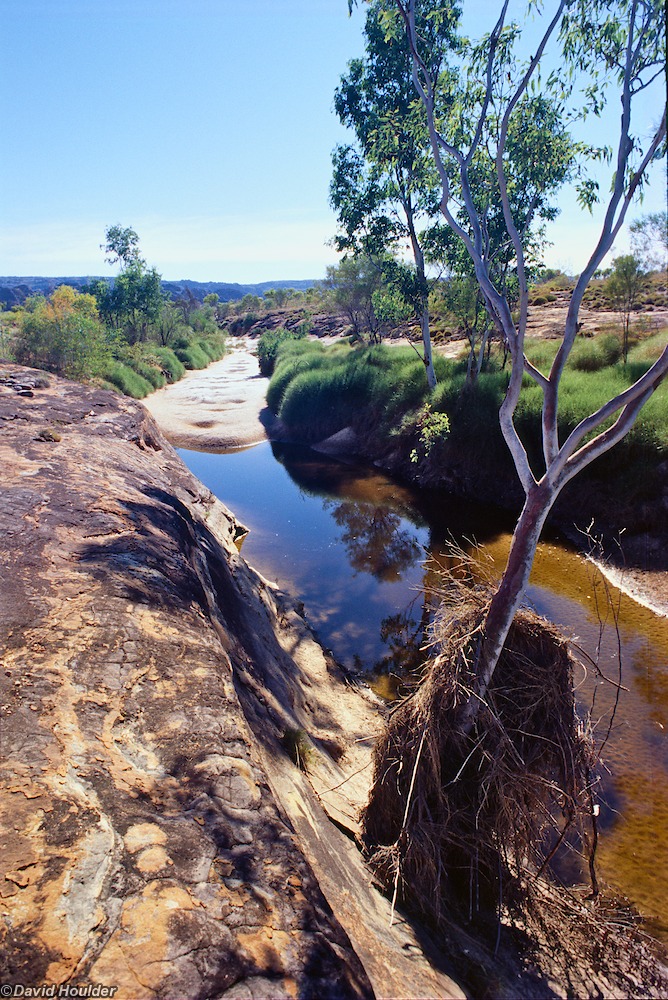
The debris in the tree gives you some idea of what this place is like in the wet season.
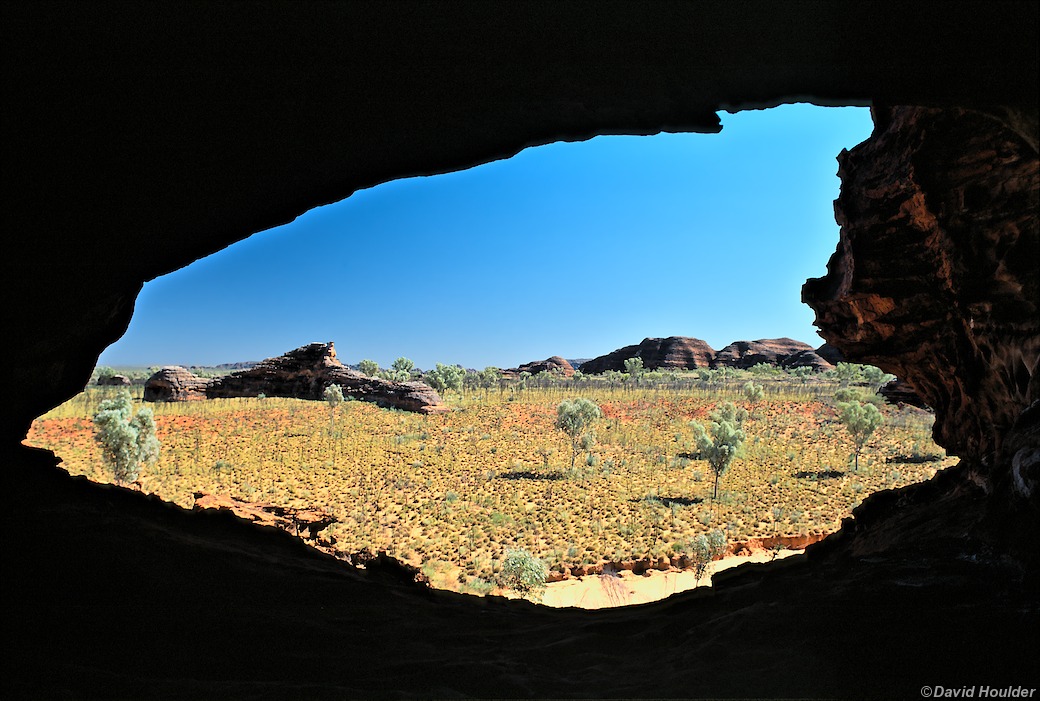
Our lunch spot on the day walk.
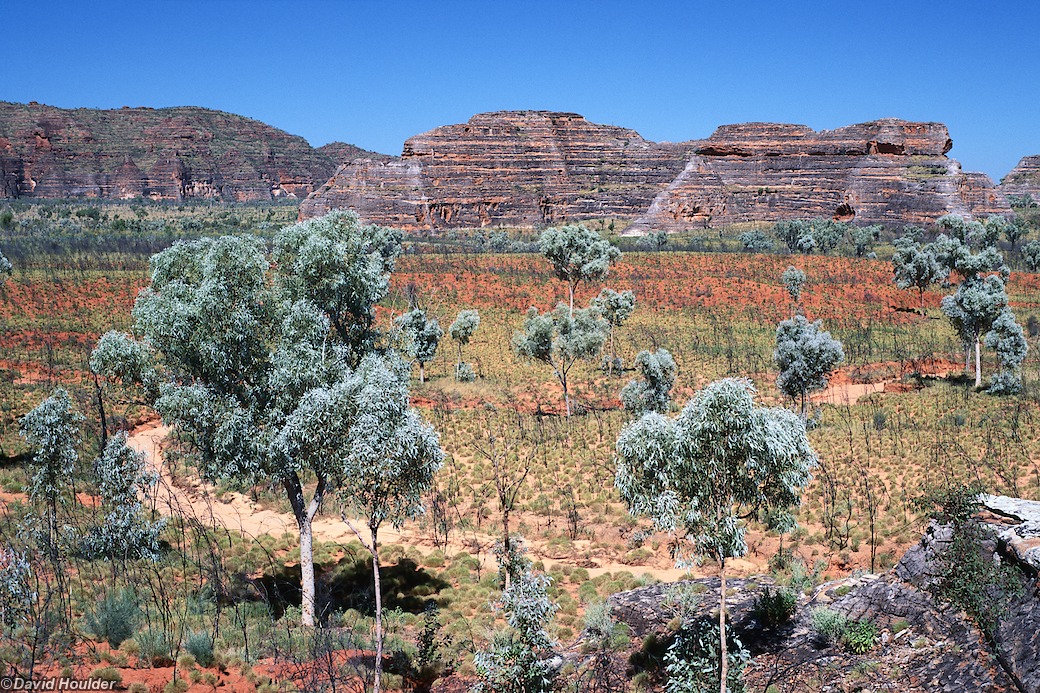
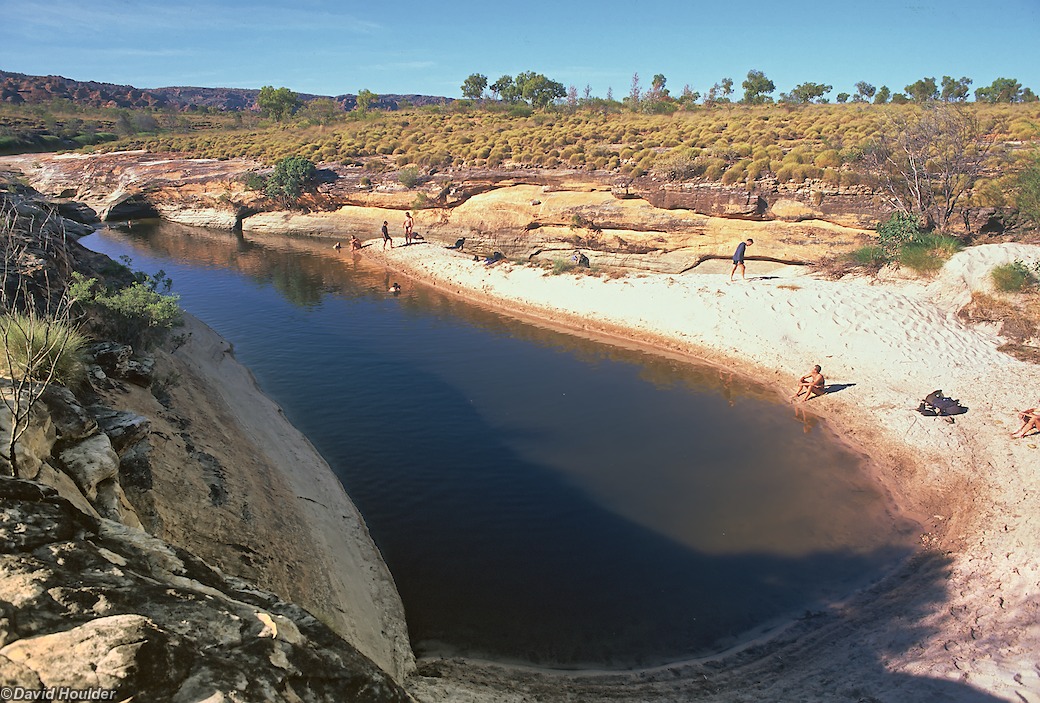
Even in the middle of the dry season there are a number of great swimming holes. Each one seemed to have one resident water monitor (a large harmless lizard).
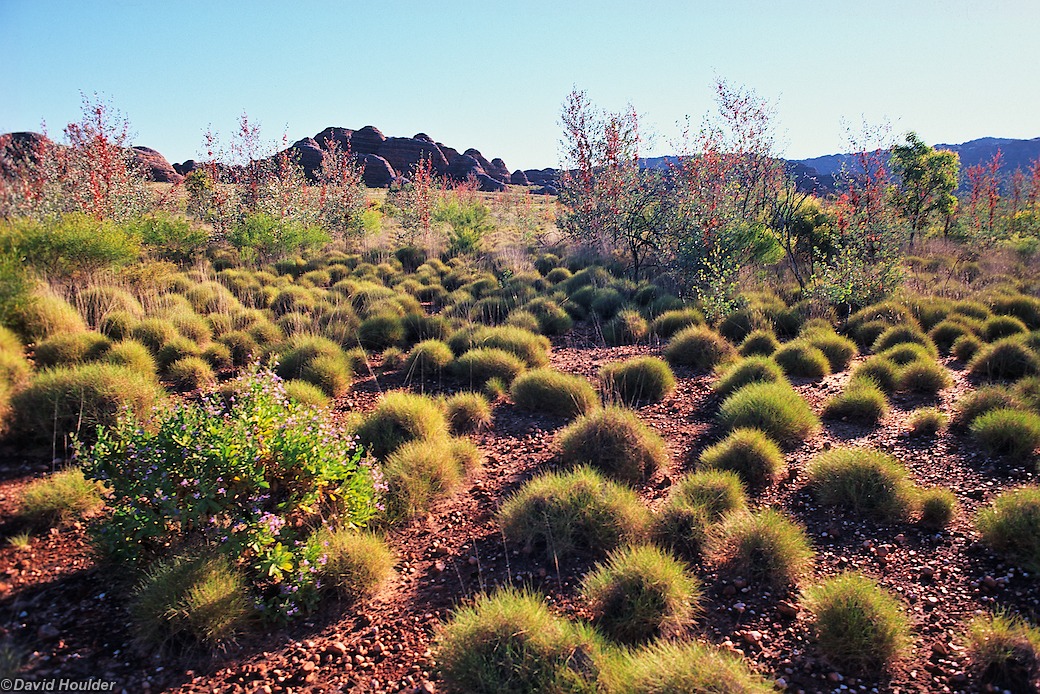
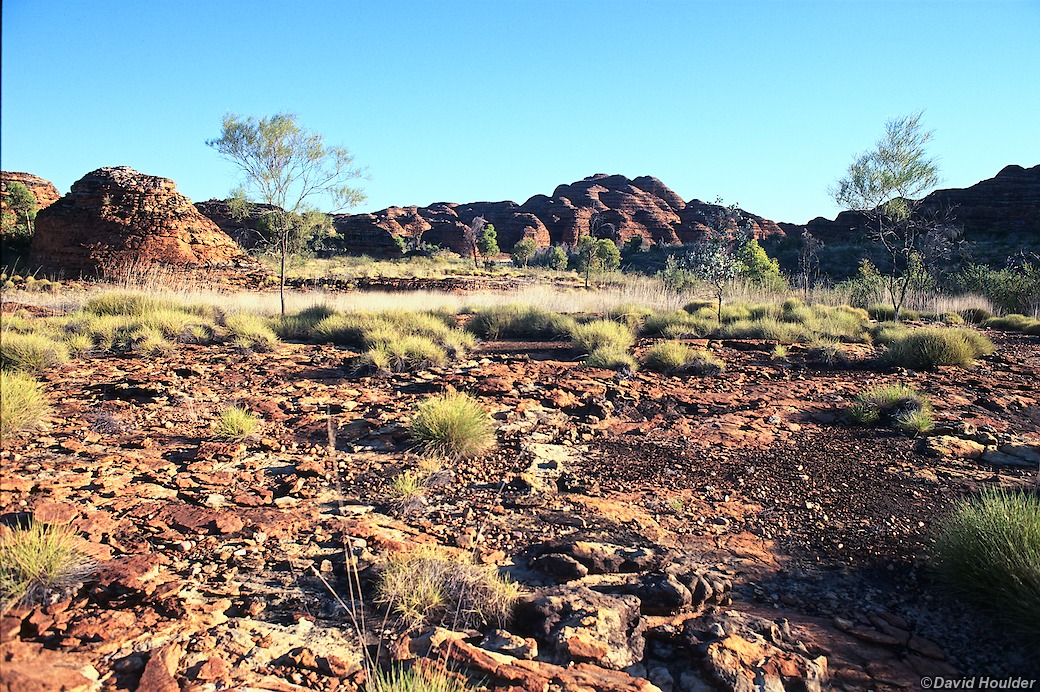

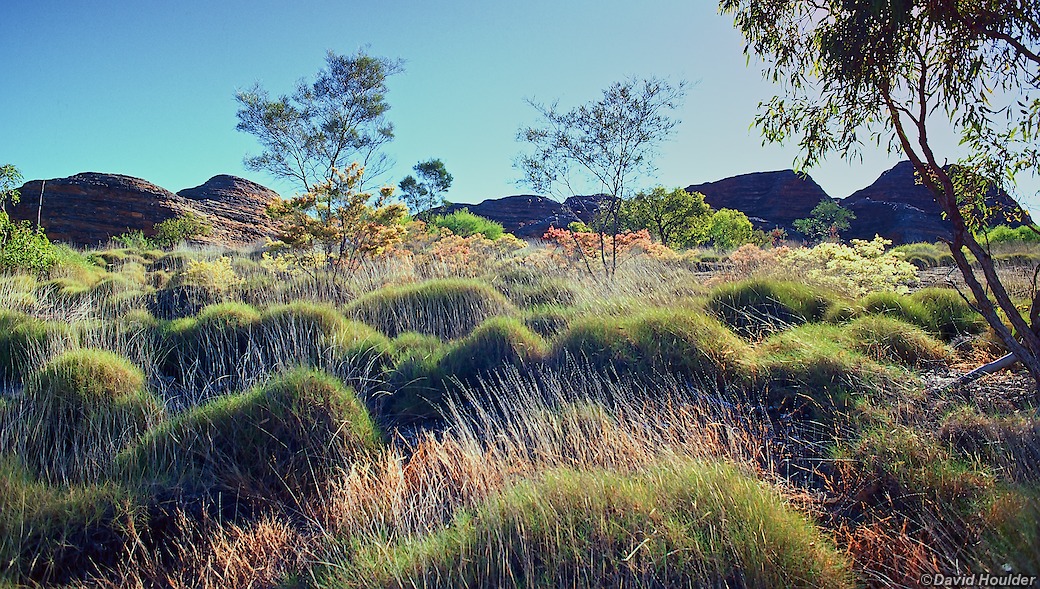
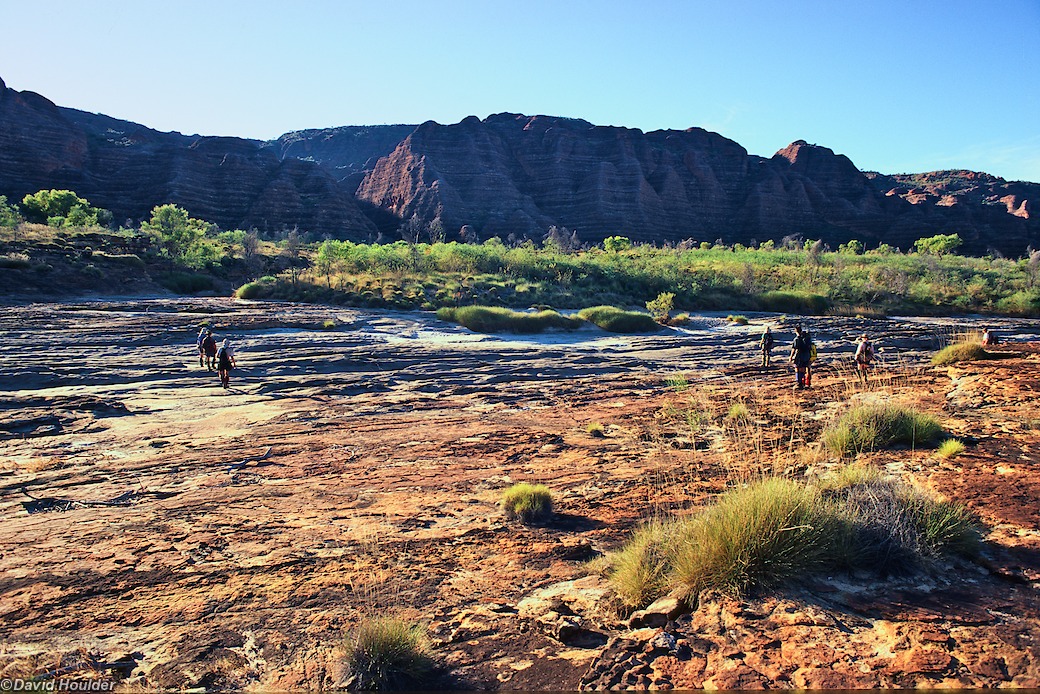
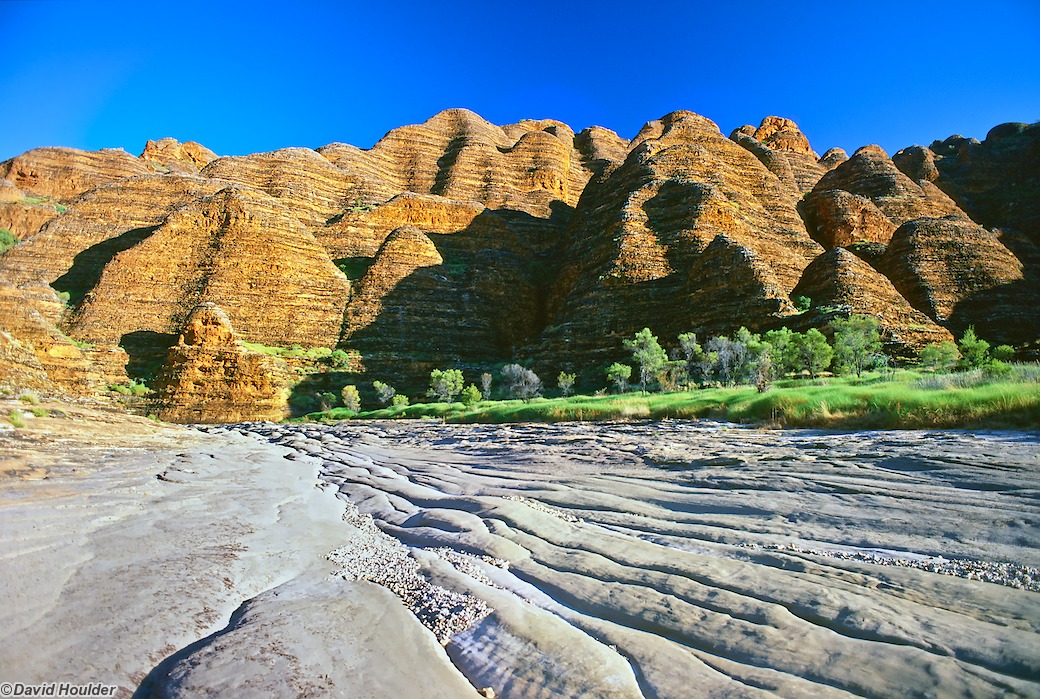
Sunrise on the rocks near the mouth of Piccaninny Gorge.
